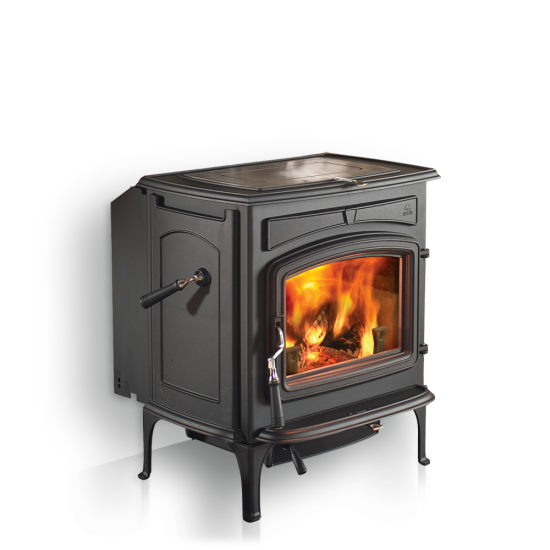Hugh,
Our primary heat for our home is wood. When I bought our home in 2011, I replaced a used wood stove with a brand new Blaze King model called the King. The company offers the Princess, the Queen, and the King. All three can be regular or catalytic type. Ours is the catalytic version.
We will start burning wood in September and burn through mid-April, and we have done this since we installed the stove. We burn only birch wood that has been split and stacked for a minimum of two years aged. I buy a load of logs that will have 66 logs in the load. The wood supplier guarantees a minimum of five cords in each load; I’ve never had less than six cords. The cost is $880 per load, and we could go and cut it ourselves if we wanted. I’ve seen home heating oil sell up here for as high as $6.60/gallon and as low as $2.45/gallon. We loose power every winter for at least two weeks and one year for three weeks at a time.
The catalyst has held up now with no signs of failure, though I do keep a spare, and it cost $200 when I bought it. Our model came with a glass front, which was a waste of money. It hasn’t broken, but the manner that the stove operates causes creosote to form in the fire box. This then ignites and burns inside the fire box. The gases given off by the burning creosote ignite and burn inside the catalyst; as a result the glass is perpetually black.
I clean the chimney cap once a year at the end of the burning season; there has never been creosote in the pipe from one inch below the cap location. When the stove is fully lit and burning hot there is no smoke, and it is common to see brown ice sickles form from the humidity flowing down the side of the pipe when it is 40 to 60 degrees below zero. At 70 or more degrees below zero, there are no ice sickles present, as most of the humidity has evaporated out of the air.
I do have a metal piece that sits atop the stove, and my wife keeps a pot of stew on it occasionally so we can cook or heat water on the stove if needed. I have a heat-driven fan that circulates the hot air and is silent; it works absolutely great for the house. If the power goes out, so what. We have heat, can cook, the Aladdin lamps are great for light, and the Coleman stoves we have bought over the years work fine for cooking. This stove, all totaled up, cost $4500, including all new pipe and professional installation, but it has saved us thousands of dollars in oil costs. This year oil dropped to $2.45/gallon so I filled the 500-gallon house tank and the 300-gallon tank I keep for other use, since it was so cheap.
Since this stove is so efficient, we burn on average 4 1/2 to 5 1/2 cords a year depending on how cold it gets. The last three years, we have seen very warm temps averaging only 35 below zero at the lowest; this winter has seen on average 45 below with a three-day period a few weeks ago at 74 below zero. So far the power hasn’t gone out. I use a Honda E2000i generator for back up power since our needs are so few.
This is my first Blaze King. I talked to a lot of folks who lived here for many years and followed their advice for purchasing our stove. I have burned wood for over 30 years, and this is by far the best stove I’ve ever owned. We load it up usually around 9 PM before bed time, and it will burn almost to 11 AM the next day. The ash is a very fine dust and needs to be cleaned out only once a week, and this is a very easy in and out process. The wood is front load only, and I use 20″ length pieces of well-aged wood only. We never burn anything but well-dried wood in this stove, as it is our primary heat source.
We do not keep a water pot on the stove because the humidity will get into the crawl space in the roof, freeze, and collapse the ceiling; this is a very common problem in the arctic regions. The Blaze King company has contacted us in the past for advice on how to improve their product, but we cannot think of any way to do so. I did tell them the glass door option and gold trim is useless, except for sales, and that the electric fan option, which bolts onto the back of the stove, is equally as well useless since the heat driven fan we bought that sits on top of the stove is less expensive ($125.00 opposed to the $300.00 cost of the electric fan) and is silent in operation, even when the power is out.
In your areas “outside” USA, the Queen or Princess would be a good choice at less money and smaller size; however, when it hits 70 or more below, more heat is good. – M.H.










